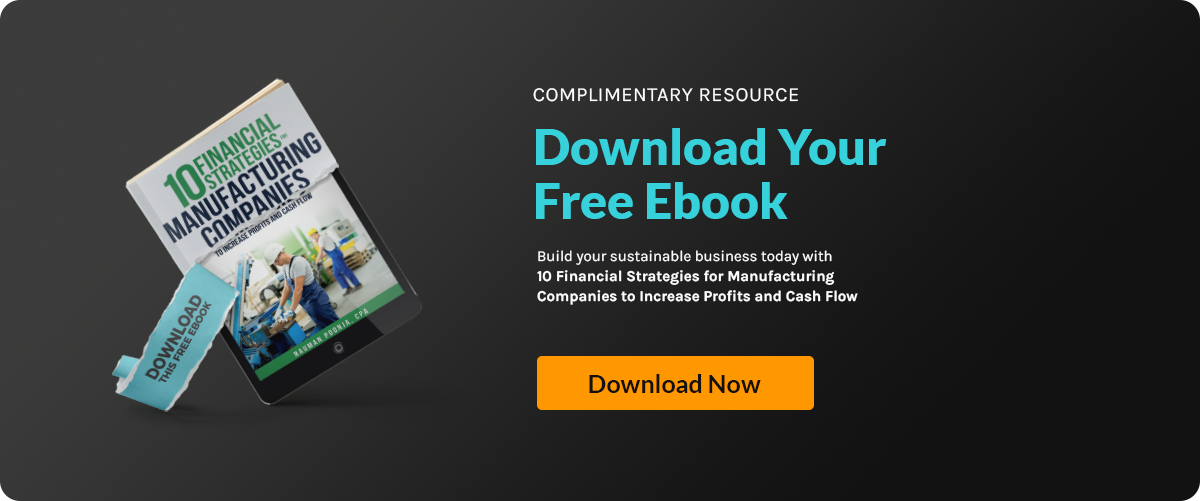Equity splits can build strong partnerships or destroy them. For founders, deciding how to divide...
10 Financial Red Flags Every Founder Should Watch For

Running a business means constantly balancing ambition with discipline. For founders, it’s easy to focus on growth and overlook early warning signs buried in financial data. Yet, these signs—if ignored—can quietly erode profit, cash flow, and investor trust.Financial red flags don’t always come as major losses. Often, they appear as small inconsistencies in reports, unusual trends, or weak internal controls. Spotting them early gives you time to correct course before the damage spreads.
Here are ten key financial red flags every founder should monitor—and how to use sound financial practices to prevent them.
1. Inconsistent or Delayed Financial Reporting
When financial statements arrive late or contain unexplained revisions, it signals poor internal controls. Timely, accurate reports form the backbone of decision-making. Delays mean management is reacting, not leading.
A founder should ensure monthly and quarterly statements follow a standardized financial management control process. Reports must reconcile with bank accounts, invoices, and inventory logs.
Consistent reporting rhythm also builds investor confidence—showing that your finance team has control over both timing and accuracy.
2. Declining Cash Flow Despite Rising Sales
A business showing growing revenue but shrinking cash flow has a problem beneath the surface. This usually indicates cash is tied up in receivables, excess inventory, or delayed payments.
The danger? Even profitable companies can fail if they run out of liquidity. Strong cash flow forecasting helps founders track how quickly cash moves through the business and identify bottlenecks before they become crises.
Managing the cash flow cycle effectively—by balancing receivables, inventory, and payables—ensures operations stay funded even during market fluctuations.
3. Rapidly Increasing Overhead Costs
Overhead creep is a silent profit killer. When rent, salaries, software subscriptions, and administrative costs rise faster than revenue, margins tighten.
To diagnose this, analyze your profit and loss statement for expense categories showing consistent growth. Cross-check against production volume or revenue growth. If costs rise without operational justification, it’s time to review efficiency.
Automation and structured systems—such as accounting automation tools help control administrative costs and ensure scalable operations.
4. Poor Inventory Turnover
For manufacturers, inventory efficiency directly affects cash flow. Slow-moving or excess inventory traps capital that could otherwise fund operations or new investments.
Monitoring inventory carrying costs helps quantify how much cash is stuck in stock. A healthy inventory turnover ratio indicates strong demand forecasting and lean supply chain management.
If turnover slows, reassess purchasing strategies or production scheduling. Optimizing inventory efficiency through cost management can recover liquidity and boost profitability without cutting quality.
5. Weak or Irregular Gross Margins
Gross margin reveals how efficiently a business converts raw materials and labor into profit. When it fluctuates unexpectedly, it points to deeper operational or pricing issues.
Compare your margins monthly and by product line. Sudden declines may result from untracked material cost changes, overtime labor, or unplanned rework.
Using accurate cost of goods sold (COGS) calculations helps ensure every cost input is accounted for. Once accurate data is in place, conduct margin analysis to identify which segments drive the highest returns.
Margins that remain unstable signal weak cost control, pricing gaps, or lack of production discipline.

6. Rising Debt with No Matching Asset Growth
Debt isn’t always bad—it can fund expansion. But when liabilities grow without a proportional rise in productive assets or revenue, it signals imbalance.
A founder should review the debt-to-equity ratio regularly and ensure every loan directly contributes to capacity or profitability. Compare your financial leverage using frameworks from debt vs. equity analysis.
Investors want to see debt used strategically, not as a crutch for poor cash flow. Excessive reliance on short-term credit or lines of credit can quickly turn into solvency risk.
7. Missing or Unclear Financial KPIs
If you can’t easily explain how your company measures financial success, that’s a problem. Key performance indicators (KPIs) are essential for monitoring the pulse of your business.
A strong financial KPI dashboard helps track profitability, liquidity, and efficiency in one place. Missing or inconsistent KPIs make it impossible to identify early warning signs before they affect results.
Manufacturing founders should track metrics like return on invested capital (ROIC), current ratio, and days sales outstanding (DSO). Consistent monitoring allows early intervention when performance drifts off course.
8. Lack of Forecasting and Scenario Planning
Running without forecasts is like driving blindfolded. Founders who operate on instinct instead of projections risk overcommitting cash or missing growth opportunities.
A disciplined forecasting routine—supported by financial modeling turns raw data into actionable insight. It allows you to test different “what-if” scenarios:
-
What happens if raw material costs increase by 10%?
-
How would a delayed customer payment affect payroll?
Building these models prepares your business for uncertainty. Without them, decisions rely on guesswork, not strategy.
9. Weak Internal Controls and Oversight
When multiple people handle financial transactions without clear segregation of duties, the door opens to error—or worse, fraud.
Founders should ensure that key roles such as bookkeeping, approvals, and reconciliations are separated. Implementing structured financial controls to prevent fraud safeguards assets and maintains reporting integrity.
Automated systems with audit trails reduce manual intervention and provide visibility across all transactions—critical for investor trust and compliance.
10. Ignoring Early Audit Findings or Compliance Gaps
Minor accounting discrepancies often signal deeper process flaws. Dismissing them during audits can lead to future regulatory issues or restated financials—both major red flags to investors.
Establishing a strong financial auditing process helps identify and correct weaknesses proactively. Companies that maintain audit readiness year-round spend less time scrambling during due diligence or external reviews.
Founders should also ensure compliance with GAAP standards to maintain consistent, comparable financial statements that meet investor and lender expectations.
Bonus Red Flag: Overreliance on Manual Spreadsheets
Many startups and growing manufacturers still manage finances on spreadsheets. While convenient early on, spreadsheets quickly become error-prone and hard to scale.
Migrating to integrated systems reduces manual errors and accelerates decision-making. Using ERP platforms ensures data consistency across accounting, production, and payroll—crucial for operational and financial accuracy.
Manual systems hide inefficiencies. Automated platforms reveal them.
How to Proactively Address Red Flags
1. Implement Monthly Financial Reviews
Schedule recurring review meetings that compare actual results against forecasts. Use variance analysis to identify what’s driving gaps.
2. Strengthen Documentation and Data Hygiene
Every expense, invoice, and adjustment should have supporting documentation. Inconsistent records make audits painful and weaken internal trust.
3. Engage FP&A Expertise
An FP&A function—or an outsourced equivalent—helps transform raw accounting data into financial strategy. Explore how structured FP&A processes create forward visibility and operational discipline.
4. Maintain a Risk Management Plan
Manufacturers face fluctuating input costs, demand cycles, and regulatory changes. A formal financial risk management plan helps prepare for disruptions and keeps capital allocation aligned with long-term stability.
5. Bring in External Oversight When Needed
When growth outpaces your internal capacity, consider working with a fractional CFO .They provide executive-level oversight, ensuring that red flags are identified early and corrective strategies are in place.
Why Red Flags Often Go Unnoticed
Founders juggle product, people, and operations—finance often takes a backseat. But small cracks in financial discipline can quickly expand as the company scales.
Three reasons these red flags persist:
-
Data Silos: Teams store information separately, making full-picture analysis difficult.
-
Lack of KPIs: Without measurable goals, there’s no benchmark to identify deviation.
-
Cultural Blind Spots: Financial issues are seen as “accounting problems” rather than leadership issues.
Fixing this requires shifting mindset: finance isn’t just a back-office task—it’s a strategic tool.
The ROI of Financial Vigilance
Catching red flags early protects cash flow, improves investor confidence, and strengthens valuation. Clean books mean faster funding, easier audits, and more predictable growth.
Financial discipline signals maturity. Companies that maintain transparency and internal control systems outperform those that only fix issues reactively.
When data integrity is high, every department—from operations to sales—can make better decisions grounded in reality.
The Bottom Line
Financial red flags don’t appear overnight—they build up quietly, hidden in delayed reports, irregular margins, and unmanaged risk. Founders who develop financial awareness early don’t just prevent crises; they build companies investors trust.
By automating systems, tracking KPIs, forecasting accurately, and maintaining audit readiness, your business becomes more resilient—and far more scalable.
Being vigilant about financial health is not about avoiding failure—it’s about positioning your company for long-term strength.
Noticing early signs of financial inefficiency?
Contact Accounovation to audit your financial systems, strengthen controls, and build scalable processes that keep your numbers clean and your growth on track.






